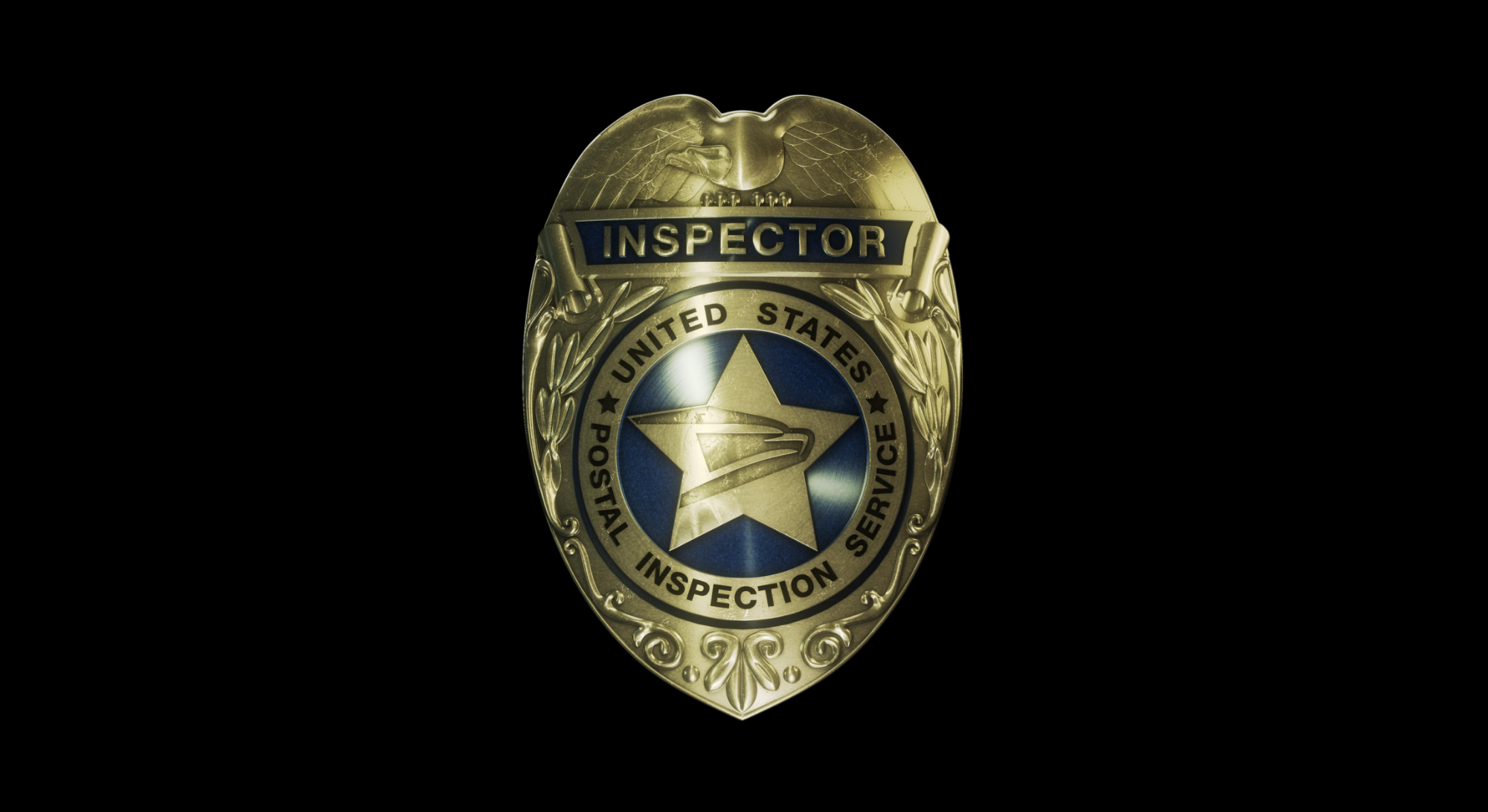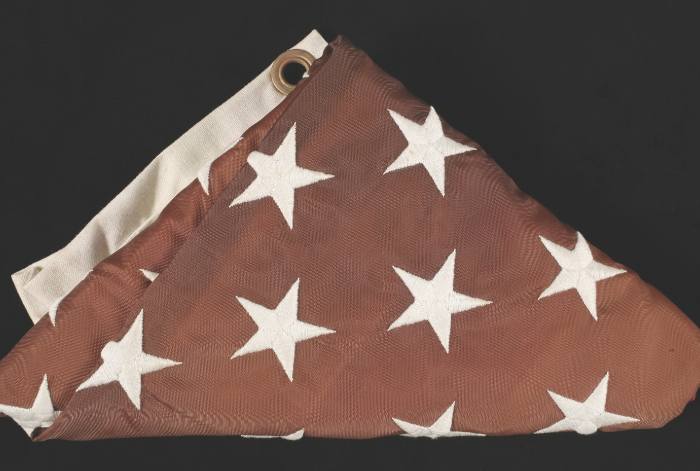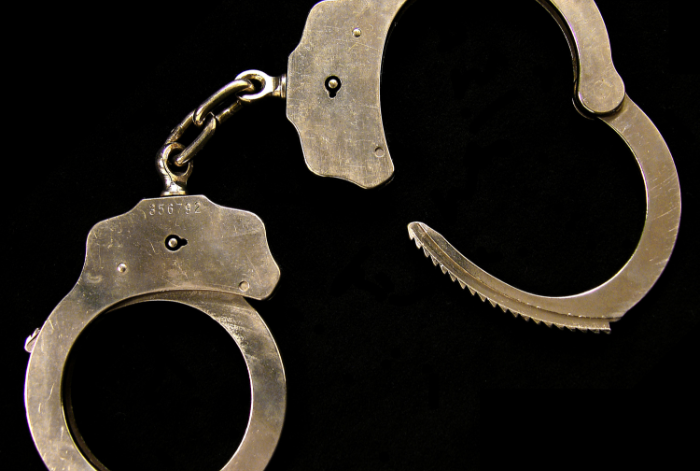
A badge for the United States Postal Inspection Service (USPIS), the law enforcement arm of the Postal Service. (Courtesy US Postal Inspection Service)
Patricia Manzolillo, AB’92, came from a Post Office family—and has made her own mark on the agency.
There’s an old line about families like Patricia Manzolillo’s. “We like to say we have postal blue in our veins,” says Manzolillo, AB’92, whose father, sister, grandfather, uncle, and great-uncle all worked for the United States Postal Service (USPS).
So it was perhaps not surprising that Manzolillo would find her way to the agency once led by Benjamin Franklin. Less expected, however, is exactly where within the USPS: the United States Postal Inspection Service (USPIS), its law enforcement arm. Manzolillo has worked for USPIS since 1996, with a long stretch as director of its forensic laboratory. Two years ago, she became director of business operations.
That the postal service has a law enforcement arm is news to many. In fact, the Postal Inspection Service is even older than the nation it serves. Its origins date to 1775, during the Second Continental Congress. This year it celebrates its 250th anniversary.
Today the USPIS is tasked with preventing crimes that involve the mail: money laundering, mail theft, suspicious mail, child exploitation, and the illegal drug trade, among others.
As a kid, Manzolillo loved science and was enraptured by the long-running series Quincy, M.E.: “solving problems with science,” she says. Her plan was to become a medical examiner like her television hero. She took all the premed classes, but—in true UChicago fashion—she chose an out-of-left-field major: history, with an emphasis on the ancient Mediterranean world.

Soon after graduating, she enrolled in a master’s program in forensic science at the University of Alabama at Birmingham—one of the few schools at the time that offered such a program. As her knowledge of forensics broadened, a new passion emerged: document examination. “Then I found out, of course, that one of the best labs for forensic document examination was the Postal Inspection Service,” Manzolillo says. She got an internship, and “from there, that was it.”
Becoming a document examiner required several years of apprenticeship-style training. Manzolillo learned how to do handwriting and typewriting analysis, find signs of document alteration and counterfeiting, examine printed documents, and more. The forensic lab team also acted as advisers, helping the Postal Service develop more secure forms of money orders and stamps. “I know people don’t think of this,” she says, “but stamps are like money … so we put a lot of security features into them.”
Stamp counterfeiting was the subject of one of Manzolillo’s favorite cases. (“They’re all important, even the small ones,” she says of the cases she’s worked. But “there are some funny cases, and those are the ones that stick with me a little bit more.”) A postal inspector sent Manzolillo a batch of letters mailed with ersatz stamps—evidence, he suspected, of a major counterfeiting ring in south Florida.
Indeed, the stamps looked authentic. Manzolillo quickly realized why: When stamps are sold in booklets, they typically feature a photo of the stamp on the cover. Someone had simply cut out the photo and taped it to the letter.
“So I called the inspector, and I said, ‘Where are these coming from?’” she recalls. His answer: a nursing home. Manzolillo gently told him she did not think he had a large-scale criminal enterprise on his hands, but rather a group of elderly people making an honest mistake (or, at worst, committing some sub-78-cent mischief) while sending out Christmas cards.
Manzolillo spent almost eight years as a document examiner before taking on her first leadership role, as assistant lab director. “It was a huge transition, because it was no longer me making my decisions about the cases,” she says. Instead she spent much of her time helping other forensic scientists, whether by providing advice or resources. Still, she couldn’t resist occasionally popping down to the document examination unit to see what was going on. (Even now, when she looks at someone’s handwriting, “my brain is sort of immediately analyzing it.”)
She took her current role in business operations thinking it would be a short stay. “But after a few months, I realized just what an impact I could have,” she says. Overseeing nearly everything administrative in the Postal Inspection Service, she suddenly had the power to fix processes and remove bureaucratic roadblocks.
Her father, who spent his entire career at the Postal Service, has watched hers with pride. “Most of our conversations now, even though he’s retired, still revolve around the Postal Service,” Manzolillo says.

Who wrote this?
The subject of Manzolillo’s first handwriting analysis was Santa Claus.
Every year of her childhood, she got a paper Advent calendar featuring a letter from the man himself. “And my mom says that even when I was little, I was constantly sitting there trying to figure out who was writing it.”
It takes years of training to develop the skill of handwriting analysis. (A 2022 study in the Proceedings of the National Academy of Sciences found that experienced forensic document examiners like Manzolillo could reliably identify whether two written samples came from the same person; those with less than two years of study could not.)
We all have many versions of our handwriting. The one we use to scribble a grocery list isn’t the same one we’d put on a thank-you card. Examiners prefer to have samples from a variety of contexts for comparison. Still, all the iterations of a person’s handwriting are likely to share certain underlying traits—“handwriting habits,” Manzolillo says—such as the spacing between letters and words and the degree of slant.
You can, Manzolillo says, occasionally guess someone’s age or where they grew up based on their handwriting, because of variations in the way particular letterforms have been taught regionally and over time. But it’s a fool’s errand to try to suss out gender: “I’ve seen writing from what has turned out to be this huge, massive guy in prison, and you would think it’s a teenage girl’s handwriting with all the flowery stuff.”
